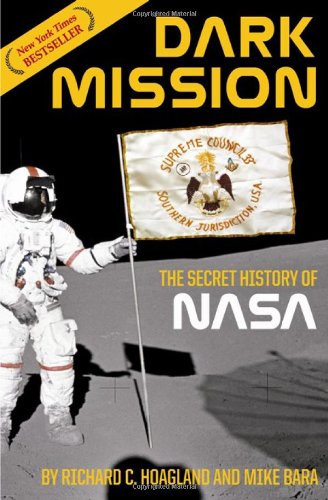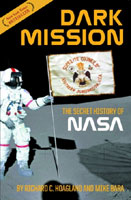Richard Hoagland has done more than any other researcher to draw attention to the devastating possibility that the ruins of ancient and unknown civilizations may lie on the surface of the planet Mars and on the Moon. Although his views and his meticulous presentation of the evidence have been pilloried by many mainstream scientists, he has continued for many years to build up his case and put it before the public, drawing attention to what he believes are deeply disturbing cover-ups and misrepresentations of the facts by NASA (the US National Aeronautics and Space Administration). Hoagland's latest book, the New York Times bestselling Dark Mission: The Secret History of Nasa, has become a publishing sensation since it was released in the US in October 2007 and speaks to the increasing conviction felt by many Americans that their government routinely lies to them. Far from its squeaky-clean image of technological infallibility, Hoagland says, the truth is that NASA was born in a lie, and has gone to extraordinary lengths to conceal the facts of its occult origins and its sensational discoveries on the Moon and Mars.
Few people are aware that NASA was formed as a national defense agency adjunct empowered to keep information classified and secret from the public at large. Even fewer people are aware of the hard evidence that secret brotherhoods quietly dominate NASA, with policies far more aligned with ancient religious and occult mystery schools than the façade of rational science the government agency has successfully promoted to the world for almost fifty years.
Why is the Bush administration intent on returning to the Moon as quickly as possible? What are the reasons for the current "space race" with China, Russia, even India? Remarkable images reproduced within this book provided to the authors by disaffected NASA employees give clues why, including spectacular information about lunar and Martian discoveries.
Former NASA consultant and CBS News advisor Richard C. Hoagland and Boeing engineer Mike Bara offer extraordinary information regarding the secret history of the National Aeronautics and Space Administration and the astonishing discoveries it has suppressed for decades. Co-author Mike Bara is an engineer who has worked for Boeing and other aeronautic firms.
The Freemasonic flag seen on the cover was brought to the Moon by 32° astronaut Buzz Aldrin, and later ceremoniously presented to Scottish Rite headquarters in Washington D.C.
Richard Hoagland is our author of the month for December 2007 and will be available for discussion on our Author Of The Month Message Board. His article begins below.
The NASA that we've known for over 50 years has been a lie.
My name is Richard C. Hoagland. I was a NASA consultant to the Goddard Spaceflight Center in the post-Apollo era, and Science Advisor to Walter Cronkite and CBS News, Special Events, advising CBS on the science of the NASA missions to the Moon and Mars, during the Apollo Program. I currently run an independent NASA watchdog and research group, the Enterprise Mission, attempting to figure out how much of what NASA has found in the solar system over the past 50 years has actually been silently filed out of sight as classified material, and therefore totally unknown to the American people.
My friend and colleague Mike Bara and I attempt the impossible in our book Dark Mission: The Secret History of NASA. We describe, and then carefully document, exactly what's been going with NASA in terms of that classified data and information. It is not an easy task.
The predisposition of most Americans — even after the Challenger and Columbia disasters and a host of other "missing" spacecraft — is to place NASA somewhere on par with Mother Teresa in terms of public confidence and credibility. This is, in major part, due to the average American's (to say nothing of the media's) inability to figure out a reason why NASA — ostensibly a purely scientific Agency — would actually lie. NASA is, after all, holding high the beacon of our last true heroes, the astronauts. I mean, what's to hide regarding moon rocks, craters and space radiation?
If we're right, a lot.
However, even a hint that NASA — or, more precisely, its leadership — has been carrying out any kind of hidden agenda for over 50 years is, at best, met with disbelief. The vast majority of NASA's nearly 18,000 full-time employees are, in our analysis, innocent of the wrongdoing of the few that we are going to describe.
To even begin to understand the extraordinary case we are presenting in Dark Mission, to fully appreciate what NASA has been quite consciously, deliberately and methodically concealing from the American people and the world for all these years, you have to begin with NASA's turbulent past — specifically an account of its origins in the increasingly dangerous geopolitical environment Americans were thrust into in the wake of World War Two.
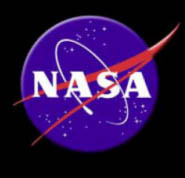
The governmental institution known as NASA is a department of the Executive Branch, ultimately answerable solely to the President of the United States, an Agency created through the National Aeronautics and Space Act of 1958. NASA ostensibly is "a civilian agency exercising control over aeronautical and space activities sponsored by the United States." (Emphasis added.)[i]
But contrary to common public and media perception that NASA is an open, strictly civilian scientific institution, is the legal fact that the Space Agency was quietly founded as a direct adjunct to the Department of Defense, tasked with specifically assisting the national security of the United States in the midst of a deepening Cold War with its major geopolitical adversary, the Soviet Union. It says so right in the original NASA Charter:
"Sec. 305… (i) The [National Aeronautics and Space] Administration shall be considered a defense agency of the United States for the purpose of Chapter 17, Title 35 of the United States Code…" [Emphasis added.]
In another section[ii] of the act, this seldom-discussed defense responsibility — the ultimate undercutting of NASA's continuing public facade as a strictly civilian, scientific agency — is blatantly spelled out:
"Sec. 205… (d) No [NASA] information which has been classified for reasons of national security shall be included in any report made under this section [of the Act]…" [Emphasis added.]
Clearly, from this and the other security provisions[iii] incorporated in the Act, what the Congress, the press and the American taxpayers get to see of NASA's ultimate activities — including untouched images and data regarding what's really on the Moon, on Mars or anywhere else across the solar system — is totally dependent on whether the President of the United States (and/or his legal surrogates in the Department of Defense and the "intelligence community") has already secretly classified that data. This is directly contrary to everything we've been led to believe regarding NASA for over 50 years now.
After NASA was formed, almost before the ink was dry on the Bill that brought it into being (which, among many other detailed objectives, called for "the establishment of long-range studies of the potential benefits to be gained from, the opportunities for and the problems involved in the use of aeronautical and space activities for peaceful and scientific purposes"), NASA commissioned a formal "futures study" into the projected effects on American society of its many planned activities (including covert ones).
Carried out as a formal NASA contract to the Brookings Institution — a well-known Washington, D.C.-based think tank — the 1959 study was officially titled "Proposed Studies on the Implications of Peaceful Space Activities for Human Affairs."[iv] The results of this multi-disciplinary investigation were officially submitted to the administrator of NASA in late 1960, and after the Kennedy Administration was elected, to Congress in April 1961.

One area of unusual interest covered in the report — easily overlooked amid mountains of interminable statistics and analyses — was a quiet assessment of the near-certainty of a NASA discovery of intelligent extraterrestrial life:[v]
"While face-to-face meetings with it [extra-terrestrial life] will not occur within the next 20 years (unless its technology is more advanced than ours, qualifying it to visit Earth), artifacts left at some point in time by these life forms might possibly be discovered through our [NASA's] space activities on the Moon, Mars, or Venus." [Emphasis added.]
This quietly inserted sub-section of Brookings is revealing on many levels, and it forms the documented basis of our case — that the NASA "you thought you knew" doesn't actually exist, and that NASA has been deliberately concealing and classifying its most significant discoveries because of "national security" rationales.
Brookings officially affirmed NASA's expectations that the Agency would fly to nearby planets in the solar system, and would thus be physically capable, for the first time, of confronting "extraterrestrials" right in their backyard.
Did any skeptics even know this official document existed, before we made it public in 1996? As you shall see documented in Dark Mission, beginning in the mid-1960s with unmanned spacecraft, NASA actually discovered its projected extraterrestrial artifacts — but then, the Agency never got around to telling the rest of us!
NASA would clandestinely confirm with these earliest robotic probes, and then proceed to cover up, the first awesome remains of a once-extraordinary, solar-system-wide, ancient technological civilization on the Moon — precisely as Brookings had predicted. Four years later, the Apollo Program would come to full fruition, and the lunar astronauts themselves would personally witness and extensively document, with tens of thousands of high quality photographs, from both lunar orbit and the surface, extraordinary "glass-like" structures on the Moon! The Apollo crews would also bring back to NASA laboratories not just rocks, but actual samples of the ancient technologies they found — for highly classified efforts at "back engineering."
Below is just one example of the ancient, glass-like lunar ruins photographed in person by the Apollo astronauts, and hidden away (by a former NASA employee) in a private archive for more than 30 years. In Dark Mission, far more details on those historic in-situ astronaut lunar ruins observations are dealt with — and additional, uncensored Apollo photographs of these extensive structures, as well as photographs of some of the actual artifacts brought back to Earth — are presented, and analyzed in depth.
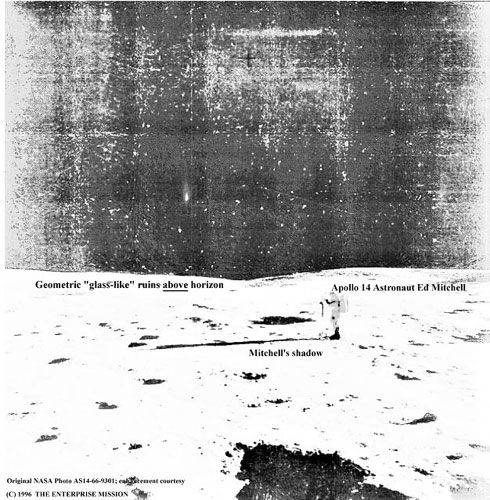
A skeptic might well ask at this point, how can we be presenting valid, official NASA images of suppressed ruins and technology if the Agency has spent so much time and energy over the last 40 years covering them up?
The answer is that after two generations, leaked images like the one above — displaying stunning details of ancient lunar structures arching overhead, as well as key alien artifacts that have been brought back — have also suddenly begun appearing on the internet, on official NASA websites!
A small cadre of loyal NASA employees were witnesses to what actually went on, and agreed at that time to keep the secret in the interest of national security. Some of these NASA employees, apparently, have finally "seen the light" — that this continued deception, no matter what the legal rationale or national security implications, was fundamentally extra-Constitutional. Because of these true NASA heroes, real space history as about to officially begin, again.
Based on our analysis as presented in this book, it is also our opinion that NASA's entire lunar exploration program — culminating with the incredibly successful manned Apollo Project — was carefully conceived, from the beginning, as a kind of "alien reconnaissance" followed by an "alien artifacts retrieval" program.
Again, the intention to do just that was blatantly laid out in Brookings. We now believe this is the reason by which President John F. Kennedy — reported to be "totally disinterested in space"[vi] — was quietly convinced to announce his historic decision to "send men to the Moon… and return them safely to the Earth… within a decade" in May of 1961. This was widely believed, then and now, to be Kennedy's effort to demonstrate to the world the superiority of the American system, as opposed to Soviet communism.
However, at the United Nations on September 20, 1963, the President suddenly issued a public invitation to the Soviets[vii] only two years into the Apollo "race" to the Moon: an offer of a "cooperative, joint US/USSR lunar expedition."
Of course, if there were a "hidden agenda" to Apollo, this move would have revealed that the prime objective was not to beat the Soviet Union, but to covertly find and return samples of the incredibly advanced lunar technology that had been waiting on the Moon for eons … and then to share them with the Soviets! Curiously enough, a mere two months following Kennedy's startling U.N. proposition, the President was killed.
The enthusiastic architects of the continuing NASA Brookings cover-up, in part, are the same heroes we have been encouraged to worship as some of the leading pioneers of our technological era. Their names are synonymous with America's achievements in space science and rocket engineering. In many cases, they are also men with secret pasts — Germans, Egyptians, Englishmen and Americans, men at the very fringes of rational thought and conventional wisdom. These literal "fringe elements," then, are divided into three main groups inside the Agency, as best as we can tell at present. For the purposes of this volume, we shall call them the "Magicians," the "Masons" and the "Nazis" — and deal with each group separately.
Each "sect" is led by prominent individuals, and supported by lesser-known players. Each has stamped their own agenda on our space program, in indelible but traceable ways. And each, remarkably, is dominated by a secret or "occult" doctrine, that is far more closely aligned with "ancient religion and mysticism" than it is with the rational science and cool empiricism these men promote to the general public as NASA's overriding mantra.
Using commercially available celestial mechanics/astronomical software — programs like the popular "Red Shift" series (which uses the official JPL ephemeris as its database) — we have been able to establish a pattern of behavior on NASA's part that points to something truly as inexplicable as it is exotic: a bizarre internal obsession by the Agency with three "gods" and "goddesses," reaching across the millennia directly from ancient Egypt — Isis, Osiris and Horus.
It is these same three Egyptian gods (whose mythic story has been documented by many Egyptologists and authors, including Christopher Knight and Robert Lomas, in The Hiram Key) that are also key to understanding the history of the Masonic Order. As we show in Dark Mission, it is this same mythology that is also at the heart of the belief systems of the NASA "Magicians" and Nazis as well. This ritual Egyptian symbolism, secretly practiced by NASA throughout these past five decades, publicly shows up only in its repeating, blatant choices of simple mission patch designs.
For instance, if one looks at the official patch for the Apollo Program (below), armed with our preceding "heads-up" regarding the bizarre NASA focus on all things "Egyptian," it becomes elemental to match the "A" (for "Apollo") as an actual stand-in for "Asar" — the Egyptian designation for "Osiris." This successful decoding of the hidden Egyptian meaning of the Apollo patch is redundantly confirmed — because "Asar/Osiris" is none other than the familiar Greek constellation of "Orion" — which is, of course, the background stellar constellation on the patch itself.
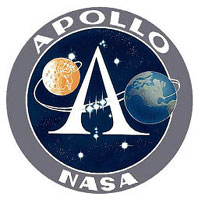
In case you think such ritual symbolism is some kind of temporary historical aberration, confined only to the Apollo Program and the 1960s, think again; when NASA recently selected a patch design for its new "CEV" spacecraft, which will eventually replace the Shuttle — and ultimately take American astronauts back to the Moon — look what NASA curiously picked again (below).
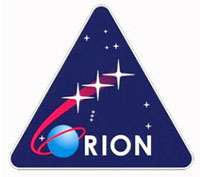
In Dark Mission we present a documented history of these continuing, inexplicable "secret society" manipulations inside NASA — not only of its personnel, but also of its major policies — which, in fact, have been going on since its Congressional formation, and all with this inexplicable "Egyptian focus."
We also investigate the purposes behind these apparently repeating rituals and identify the key players who have quietly made them happen.
You will also read more, regarding the accumulated evidence of widespread corruption, usurpation of the law and petty rivalries within the Agency — that have allowed these irrational religious practices to continue unabated.
The evidence that NASA is "something other than the benevolent civilian science institution it pretends to be," is as overwhelming now as it is disturbing.
In the years following JFK's assassination, when Apollo finally became an engineering reality, only nine successful Apollo missions to and from the Moon were carried out; only six of those were actually lunar landings.
Then (apparently), a critical number and type of lunar artifacts was successfully identified, and returned to Earth by the Apollo crews — at which point the entire Apollo Program was abruptly terminated with Apollo 17.
In our model, it was this successful completion of Apollo's secret mission and agenda, and not Congressional budget cuts, which was the real reason for this abrupt cessation of America's historic journeys to the Moon, and the primary reason no one has gone near the lunar surface for over 30 years.
All of which makes the sudden announcement by President George W. Bush of a new White House/NASA program "to return to the Moon by 2020," made at NASA Headquarters on January 14, 2004, so incredibly intriguing. What does the current Bush Administration know, 30 years after the termination of Apollo, regarding what is waiting on the Moon for human beings to return? And is this why this Administration has mounted an Apollo-style program "on steroids" — as new NASA Administrator Mike Griffin, specifically appointed by President Bush to head the new lunar return program — wryly terms it?
Is NASA's sudden interest in returning to the Moon actually an effort to get back as quickly as its current budgets will allow, before a host of other countries do the same? Countries that have, independently, suddenly announced their plans for going to the Moon — countries like China, India, Japan and Russia, and even the European Space Agency? Are we seeing a second space race being born? A race not for mere propaganda victories this time, but a much more important race, among a much wider field of players, for sole access to the scientific secrets the set of surviving lunar structures surveyed by Apollo must inevitably contain — which, to those who successfully decode what they discover this time could mean the ultimate domination of the Earth?
It was just a few years after the start of the Apollo missions that even more extraordinary solar system ruins were first observed on Mars — beginning with images and other instrumented scans sent back by NASA's first Mars orbiter, the unmanned Mariner 9 spacecraft, in late 1971.
This earliest robotic confirmation that there is also something "anomalous" on Mars paved the way for far more extensive observations when the first Viking orbiters and landers arrived half a decade later. Again, the details of these critical observations and discoveries — and their documentation — are laid out in Dark Mission.
The critical thing here is that, in direct contradiction to everything the press and the American people were being led to believe that NASA stood for — program transparency, open scientific inquiry, freedom of publication — the Agency quietly and methodically covered-up the most astonishing wonders it had found.
Many of NASA's consulting sociologists and anthropologists to Brookings (like Dr. Margaret Meade, whom I had the privilege of actually working with in later years, at New York's Hayden Planetarium) had been warning NASA, even as Brookings was being researched and assembled, of "the enormous potential for social instability" if the existence of bona fide extraterrestrials — or even ruins they left behind — was officially revealed in the socially repressive and heavily religious environment of the late 1950s.[viii]
With those first Lunar Orbiter images taken of the Moon, everything — the reality of ruins, their extraordinary scale, their obvious presence on more than one world in the solar system, how their builders vanished — suddenly was all too real.
There had been a powerful, enormously encompassing, extraordinary solar-system-wide civilization that had simply disappeared, only to be rediscovered by NASA's primitive initial probes. A civilization that, it would turn out later, had been wiped out through a series of all-encompassing, solar-system-wide cataclysms.[ix]
The most disturbing part of "Brookings" to policy makers, however — even before these shattering discoveries were verified — was its thinly-veiled, authoritative warnings regarding what could happen to our civilization if NASA's 1950s-style "ET predictions" were confirmed:
"Anthropological files contain many examples of societies, sure of their place in the universe, which have disintegrated when they had to associate with previously unfamiliar societies espousing different ideas and different life ways; others that survived such an experience usually did so by paying the price of changes in values and attitudes and behavior…" [Emphasis added.]
The literal disintegration of society — simply from knowing that "we're not alone."
The Brookings discussion of the implications of such a crucial discovery also encompassed a critical second-level problem: What to do if the Agency, at some point in the future, actually made such a momentous, world-changing confirmation of extraterrestrial intelligence next door? Or even of their surviving ruins and artifacts?
NASA's discussion of these problems before they occurred — and the draconian measures it was seriously considering — is revealing:
"Studies might help to provide programs for meeting and adjusting to the implications of such a discovery. Questions one might wish to answer by such studies would include: How might such information, under what circumstances, be presented to or withheld from the public, for what ends? What might be the role of the discovering scientists and other decision makers regarding release of the fact of discovery?" [Emphasis added.]
Following the political tumult and excitement of the first successful Apollo Lunar Landings, the White House and NASA dramatically changed the direction of the entire space program — under the excuse of a lack of public interest and insufficient funding.
The Agency quickly dropped any pretense of following up on the Apollo Program with permanent bases on the Moon, as well as indefinitely postponing all discussion and plans for going on to Mars.
Instead, under the now-proven lie of developing an economical, reliable, reusable space transportation system, and a "world-class" space research laboratory for it to re-supply — i.e., the Shuttle, and the International Space Station — NASA collaborated with the White House in a fateful set of decisions in the early 1970s that would consign American astronauts to endlessly circle the Earth for decades, while the Moon — with stunning ruins and bits and pieces of a miraculous, preserved technology orbiting just a quarter of a million miles away — was totally ignored.
On February 15, 2001, Fox Television aired a widely-advertised show titled Conspiracy Theory: Did We Land On the Moon? With this program, Fox removed the last weak link in NASA's ongoing, 40-year-old chain of overlapping cover-ups.
It is our assertion that this "Moon hoax" tale was carefully constructed as an elegant piece of professional disinformation — as a desperately-required distraction from the real lunar conspiracy documented here, which was beginning seriously to unravel as early as 1996. For, I can personally testify that I was a first-hand witness to true beginnings of "the Moon hoax" far, far earlier than the 2001 Fox Special — back in 1969, and in the heart of NASA itself!
The occasion was the unforgettable Apollo summer of Neil Armstrong and Buzz Aldrin's epic journey to the Moon — the amazing July landing of Apollo 11. I, of course, had been deeply immersed in all aspects of our CBS coverage of the upcoming Apollo 11 mission for months, as official science advisor to CBS News Special Events and chief correspondent, Walter Cronkite.
For the actual flight of Apollo 11, I was assigned (at my own request) to the Downey, California facility of the prime contractor for the Apollo Command and Service Modules, North American Rockwell. I was there to personally oversee construction and special effects use of my pet project for our nonstop CBS coverage of "Lunar Landing Day" — a "walk-through solar system" constructed by North American technicians specifically for myself and CBS in a huge, drafty aircraft hanger. It was in this miniature, recreated version of the solar system that I had successfully proposed that Walter Cronkite interview via satellite key engineers, project managers and "special guests" — those who had built the Apollo spacecraft at North American or had special knowledge in the realm of history and space — to comment on the historic legacy of the Apollo 11 flight.
One luminary I was proud to bring before the cameras, to chat with Walter in New York regarding the extraordinary nature of events occurring that historic night, was Robert A. Heinlein, the dean of American science fiction. Decades earlier, Bob had co-written the screenplay for Destination Moon, one of the first technically accurate film depictions of the lunar journey then unfolding on live television before a billion people all over planet Earth. As the successful author of a pioneering series of "juvenile" SF novels that, for the first time, introduced realistic space travel and engineering concepts to an entire generation of future NASA scientists and engineers, Robert Heinlein had, almost single handedly, "inspired the workforce" for the entire space program.
I must admit, I had a certain smug satisfaction that night, watching Bob Heinlein stroll through "the solar system," emphatically predicting to Walter and literally the world, via satellite, that "henceforth, this night — July 20, 1969 – will be known as 'the Beginning of the True History of Mankind.'"
After the heady events of that unforgettable 32 hours — the landing; the eerie EVA, complete with ghostly television shots "live from the Moon"; and then, after the crew had slept for a few hours for the first time on the Moon, the successful liftoff of the Lunar Module "Eagle" and rendezvous with the Command Module "Columbia," still in lunar orbit — CBS moved our unit up the street, to the Jet Propulsion Laboratory (JPL) in Pasadena. There we would cover the remainder of the flight, arriving at JPL right after the three Apollo 11 astronauts blasted home toward Earth and "splashdown" in the South Pacific, three days later.
The reason was that NASA had another mission underway during "the Epic Journey of Apollo 11" — a fly-by of two unmanned Mariner spacecraft past Mars, for only the second time in NASA's history.
With only one "CBS Special Events Unit" in California, to cover all of NASA's space activities on the West Coast in those years, it was up to our small group in Los Angeles — a producer, a correspondent, a couple of camera guys, maybe a couple of technicians, a make-up person and me — to overlap our continuing coverage of Apollo 11, now originating from the Von Karman Auditorium at JPL, with new commentary covering the second unmanned NASA mission to fly by Mars in history.
Mariner 6 was to cruise past Mars on July 31 — recording television images, making spectral scans, conducting remote atmospheric measurements, etc — just ten days after "Columbia" left lunar orbit, heading for the Pacific Ocean.
Our arrival at JPL on the afternoon of July 22, in preparation for this Mariner 6 fly-by was heady stuff for a 23-year-old network science consultant, as this was my first "in-person" tour to cover an actual live mission.
The circumstances of my first fly-by live from JPL are etched indelibly in my brain, if for no other reason than it was the moment when television lightning struck. One morning our Executive Producer, Bob Wussler, suddenly decided to put me on the air across the entire CBS television network to explain the upcoming Mariner fly-by to the nation!
How could one ever forget their first professional network television appearance — and their first official network commentary for a NASA mission flying by Mars, no less? But for the life of me, I can't remember a thing I said that morning. I do remember that I had literally to borrow a sportcoat and tie from one of the floor crew for my first appearance on network television.
And, I vividly remember a bizarre scene that happened only a couple days before at JPL, as we arrived.
It was controlled bedlam. Close to a thousand print reporters, television correspondents, technicians, special VIPs, as well as half the staff at JPL itself, were all attempting to register for the limited seating in the (relatively) small Von Karman Auditorium — that had been the scene for all live network coverage of JPL's previous extravaganzas ever since Explorer 1 had been placed in orbit by an Army/JPL team one January night in 1958.
This warm July afternoon only eleven years later, it seemed that everyone was in a mad scramble — simultaneously — to register at the lobby desks specifically set up for members of the press, trying to grab the limited number of press kits on the Mission, and then nail down a seat in the Auditorium beyond.
It was at this point, as I was drifting around Von Karman, trying to spot where the CBS anchor desk was positioned, that I noticed something strange.
Even to my untrained eye, it looked out of place: a man, wearing jeans and a long, light-colored raincoat (it was typical L.A. weather outside—so, why the coat?). This man, wearing one of those floppy "great coats" that cowpunchers used to wear in old Westerns, complete with a dark leather bag slung over one shoulder, was slowly, methodically, placing "something" on each chair in Von Karman.
As he got closer, I suddenly realized he was accompanied by a more conventionally dressed representative from JPL itself: coatless, in white shirt and black tie — the second figure was, in fact, none other than the head of the JPL press office, Frank Bristow.
In the midst of all the commotion, why was Bristow — again, the head of the JPL press office – personally squiring this very out-of-place individual around the Auditorium?
Then, as if that wasn't mystery enough, Bristow began moving "great coat guy" back out to the cramped "press room area" beyond the glassed-in foyer of the Auditorium. There, in an office where space correspondents, like Walter Sullivan (New York Times), Frank Pearlman (San Francisco Chronicle), Jules Bergmann (ABC), and Bill Stout (our local guy from CBS) hung out, and wrote their leads and copy after each formal press briefing held in Von Karman itself, a handful of reporters were now being introduced, again by Bristow, to "great coat guy." Why was the official head of the JPL press office doing this?
I soon had my answer.
As Bristow watched approvingly, his "guest" proceeded to hand each available reporter a copy of whatever he'd been putting on the seats back in the Auditorium.
As I opened up the handout, something yellow and silvery fell on the tile floor. It was a shiny American flag, maybe four inches lengthwise, made of aluminized mylar. I turned to the couple of mimeographed pages and began to read — and couldn't believe my eyes.
The date was July 22, 1969. The three Apollo 11 astronauts, Neil Armstrong, Buzz Aldrin and Mike Collins — two of whom had just successfully walked on "the frigging Moon" and wouldn't splash down in the South Pacific Ocean for two more days — were still halfway between Earth and the "Sea of Tranquility." Yet here, someone with an obvious "in" to JPL was handing out a mimeographed broadsheet to all the real reporters … claiming that "NASA has just faked the entire Apollo 11 Lunar Landing… on a soundstage in Nevada!"
And, if that wasn't weird enough, this individual was being personally escorted around Von Karman by none other than the head of the JPL press office himself!
I did what I saw the other veterans do: I casually threw the two pages in the trash and tucked the shiny flag into my notebook. But the seed had been planted.
Looking back, based on all our hard-won knowledge of what is really "out there" in the solar system, and experiencing the outrageous lengths NASA will go to keep "the secret," I can now put the pieces together.
This was an official — Op — Bristow's job was to make sure that all the national reporters covering NASA at least saw what was handed out that afternoon, complete with shiny flag to act as a mnemonic device to trigger the memory of what was in the pamphlet long after it was history. Sooner or later, a percentage of those who read it that afternoon at JPL would write it up — as a quirky angle on the far-too-dry official tale of Apollo 11.
In this way, it would become a naturally-reproducing meme — "a unit of cultural information, such as a cultural practice or idea, that is transmitted verbally or by repeated action from one mind to another" — which is exactly what NASA apparently intended to plant at JPL that afternoon. Deliberately to "infect" American culture with the story that "the Moon landing was all a fake!"
Was this all some far-seeing "back-up plan" if, in some point in the future, it started to emerge why the astronauts had really gone to the Moon?
Fox, the "fair and balanced" network, activated the meme in 2001 — with the Did We Land on the Moon? special. There, waiting in the wings was a neatly-packaged 30-year-old "conspiracy theory" perfectly gift-wrapped for those finally beginning to "disbelieve" in NASA. An officially concocted "inoculation" against troublemakers who would one day place before many of those same national reporters a set of embarrassing official Apollo photographs, asking the crucial question: "What did NASA really find during its Apollo missions to the Moon?"
Links
http://www.hq.nasa.gov/alsj/frame.html
http://www.apolloarchive.com/apollo_gallery.html
http://www.hq.nasa.gov/office/pao/History/ap15fj/index.htm
Images













Footnotes:
- http://www.enterprisemission.com/images/act-1.gif [back to text]
- http://www.enterprisemission.com/images/act-7.gif [back to text]
- http://www.enterprisemission.com/images/act-1.gif [back to text]
- http://www.enterprisemission.com/images/brooking.gif [back to text]
- http://www.enterprisemission.com/images/brook-7.gif [back to text]






